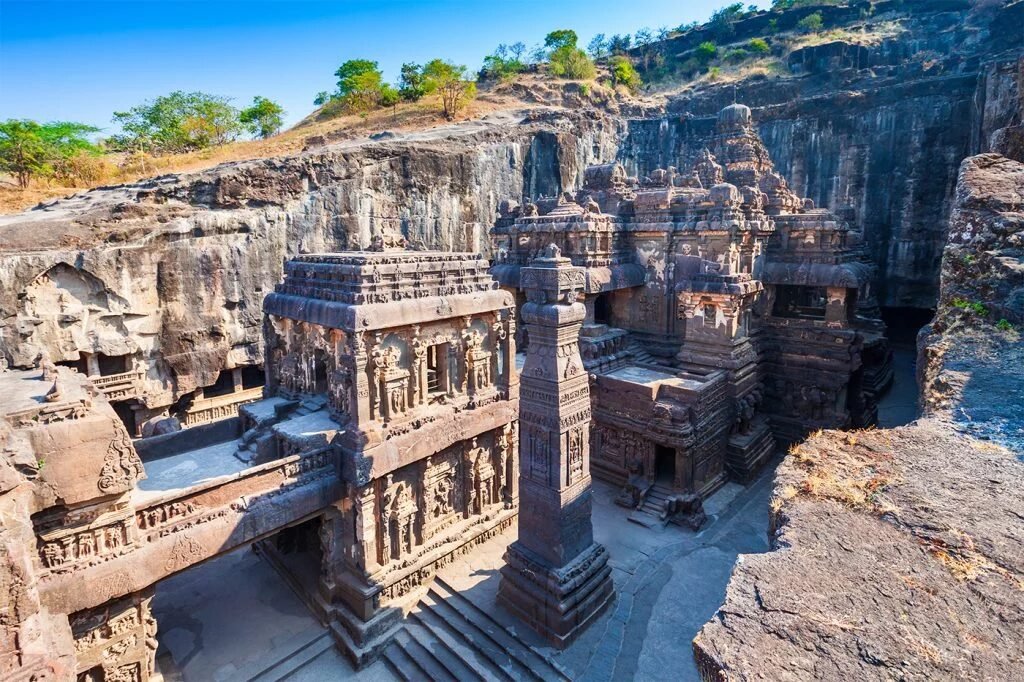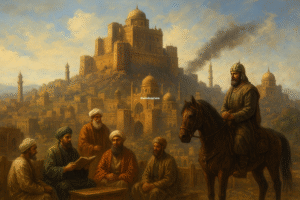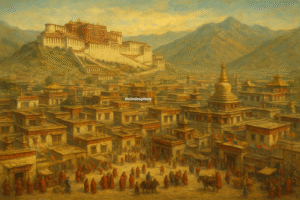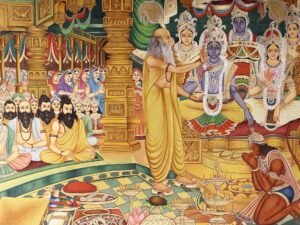
Hindu temple architecture stands as one of the most remarkable and enduring facets of Indian culture, evolving over centuries to reflect profound spiritual ideas, artistic brilliance, and socio-political changes. From simple rock shelters to intricate masterpieces, Hindu temples have not only served as places of worship but also as symbols of cosmic order and cultural resilience. This article explores their evolution, symbolic significance, regional variations, and far-reaching influence.
A Timeline of Hindu Temple Evolution
Early Period (200 BCE – 300 CE)
The earliest Hindu temples were modest in design and largely functional.
- Rock-cut Temples: These sanctuaries, carved directly into stone, were simple and unembellished. Examples include the caves at Udayagiri and Elephanta.
- Basic Shrines: Freestanding structures with a small square sanctum (garbhagriha) began to appear, as seen in the early temples at Nagarjunakonda and Deogarh.
Gupta Period (c. 300–600 CE): The Classical Form Emerges
The Gupta period is often considered the golden age of Hindu temple architecture. During this time, temples evolved into structured buildings with distinct elements such as the garbhagriha (sanctum), mandapa (hall), and shikhara (spire). The Dashavatara Temple in Deogarh is an early example of a developed Hindu temple with a clear architectural plan. The Gupta period marked the true emergence of structured temples, emphasizing spiritual symbolism and artistic experimentation.
Two primary styles emerged:
Nagara Style (North India) – Characterized by beehive-shaped shikharas and square plans. This style became dominant in regions such as Rajasthan, Madhya Pradesh, and Odisha, with temples adorned with elaborate sculptures depicting deities, celestial beings, and mythological scenes. Notable examples include the Kandariya Mahadev Temple (Khajuraho) and the Sun Temple (Konark).
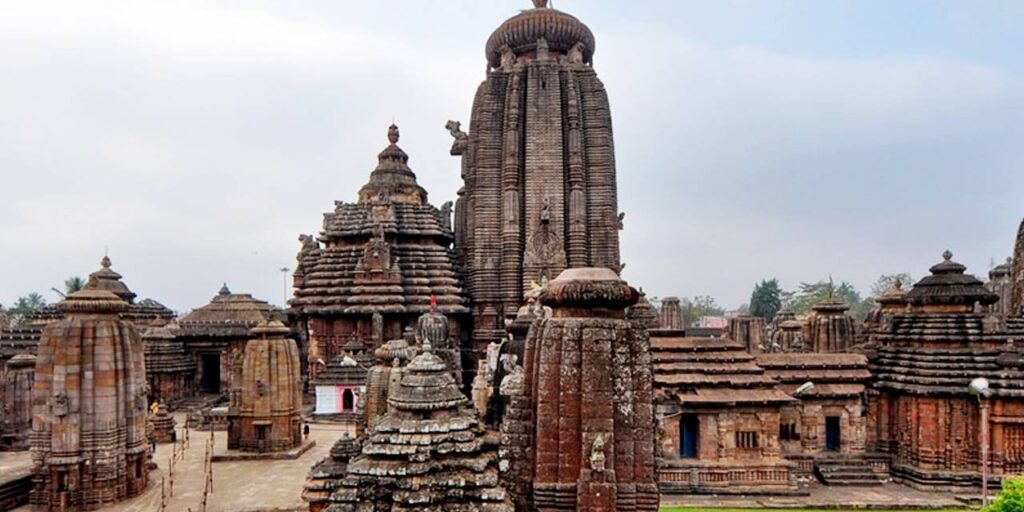
Dravida Style (South India) – Featured pyramidal towers (vimanas) and elaborate gateways (gopurams). This style flourished in Tamil Nadu, Andhra Pradesh, and Karnataka, where temples were often built as sprawling complexes with multiple enclosures. The Brihadeeswarar Temple (Thanjavur) and Meenakshi Temple (Madurai) are prime examples.

Vesara Style (Deccan): Additionally, an intermediate Vesara style emerged, blending elements of both Nagara and Dravida, particularly in Deccan temples built by the Chalukyas and Rashtrakutas. Notable examples found in Karnataka’s Pattadakal temples and the Hoysaleswara Temple at Halebidu.
Early Medieval Period (600–1200 CE): Regional Variations Flourish
This period saw the proliferation of grand temple complexes, patronized by powerful dynasties:
Pallava Dynasty (South India): The Shore Temple at Mahabalipuram showcases early Dravidian architecture with rock-cut elegance. The Pallavas also initiated the development of monolithic rathas, resembling chariots of deities.
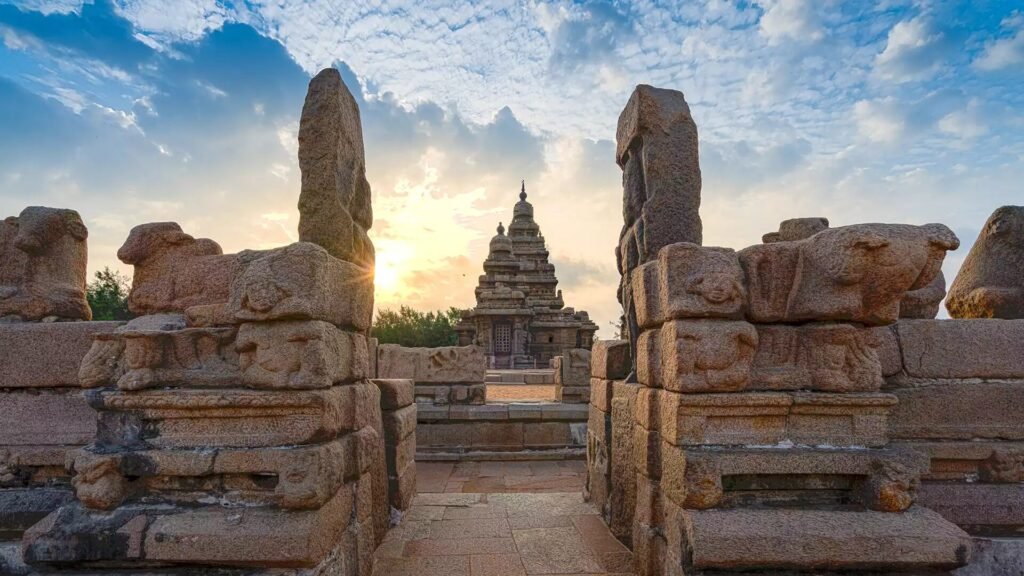
Chalukya and Rashtrakuta Dynasties: The Kailasa Temple at Ellora, carved entirely from rock, is an unparalleled architectural marvel, showcasing exquisite sculptures of Hindu gods and goddesses.
Chola Dynasty (900–1200 CE): The Brihadeeswarar Temple at Thanjavur represents the pinnacle of Dravidian temple architecture with its towering vimana and intricate sculptures. The Cholas also expanded temple networks with extensive mural paintings and bronze deity sculptures.
Pratihara and Chandela Dynasties (North India): The Khajuraho Temples, known for their exquisite carvings, embody the Nagara style. These temples are celebrated for their intricate erotic sculptures, which depict various aspects of life, spirituality, and devotion.

Late Medieval and Mughal Influence (1200–1800 CE)
The Islamic invasions of the medieval period led to the destruction of many Hindu temples, but temple construction continued in some regions. The Vijayanagara Empire (14th–16th centuries) revived Dravidian architecture, exemplified by the Virupaksha Temple at Hampi. Characterized by massive gopurams, temple tanks, and ornate pillars, the Vijayanagara style reinforced Hindu architectural traditions during an era of socio-political change.
The Bhakti movement also influenced temple styles, leading to the rise of Rajput temple architecture, seen in Rajasthan’s Eklingji Temple. The Rajputs developed distinctive temple styles, incorporating decorative elements such as toranas (arches) and elaborately carved ceilings, blending local and classical Hindu architectural traditions.
- Hoysala Architecture: Star-shaped sanctums with highly detailed carvings, as seen in the Chennakesava Temple at Belur.
- Vijayanagara Style: Known for massive temple complexes with dominant gopurams, such as the Virupaksha Temple at Hampi.
Colonial and Modern Period (1800–Present)
During British rule, temple construction slowed, but the 20th and 21st centuries witnessed a revival with grand projects such as the Akshardham Temple in Delhi, the ISKCON temples, and the Swaminarayan temples worldwide. These modern temples integrate traditional styles with new materials and engineering techniques, blending spirituality with contemporary design. Some modern temples also incorporate technological advancements such as digital soundscapes and lighting effects to enhance the devotional experience.

Another notable contemporary development is the construction of the Ram Temple in Ayodhya, a massive architectural project dedicated to Lord Rama, which aims to revive traditional Hindu temple craftsmanship using indigenous materials and skilled artisans.
Symbolism in Temple Design
Hindu temple architecture is steeped in symbolism, with every element reflecting sacred ideas derived from texts like the Vastu Shastra and Shilpa Shastra.
- Cosmic Representation: Temples are microcosms of the universe, with layouts based on the sacred geometry of mandalas. The garbhagriha represents the spiritual core.
- Vertical Axis: The shikhara or vimana symbolizes Mount Meru, the cosmic mountain at the center of creation.
- Directional Orientation: Temples are often aligned to the east, signifying light and spiritual awakening.
- Sacred Elements:
- Garbhagriha: Houses the deity, symbolizing the womb of creation.
- Mandapa: Pillared halls represent the worldly journey.
- Kalasas: The finial atop the temple signifies spiritual attainment.
- Ornamentation: Sculptures of gods, celestial beings, and mythical creatures reflect divine energy, while erotic carvings at Khajuraho symbolize fertility and cosmic union.
Global Influence of Hindu Temple Architecture
Hindu temple architecture inspired structures across Southeast Asia through trade and migration:
- Cambodia: Angkor Wat (dedicated to Vishnu) reflects Nagara-style influences.
- Indonesia: Prambanan Temple and Balinese puras integrate Indian motifs with local traditions.
- Vietnam: My Son Sanctuary, built by the Champa civilization, features brick towers and Sanskrit inscriptions.
- Thailand and Myanmar: Temples show tiered structures and Hindu mythological carvings.
The evolution of Hindu temple architecture encapsulates centuries of artistic innovation, spiritual devotion, and cultural exchange. These temples, with their symbolic designs, intricate carvings, and regional variations, remain timeless embodiments of India’s rich heritage and its influence on the world.

